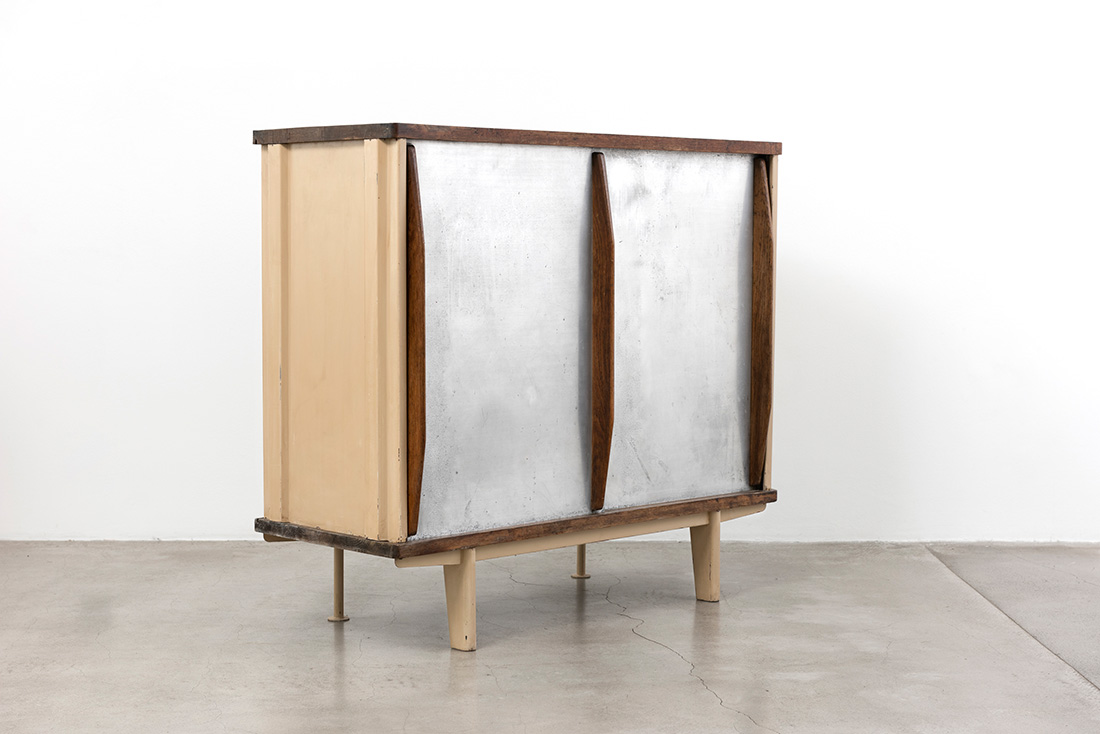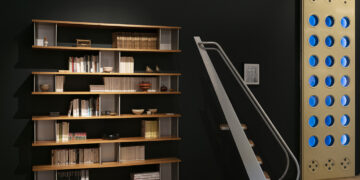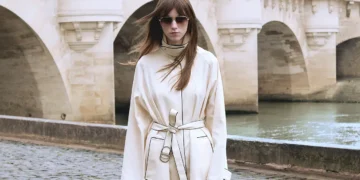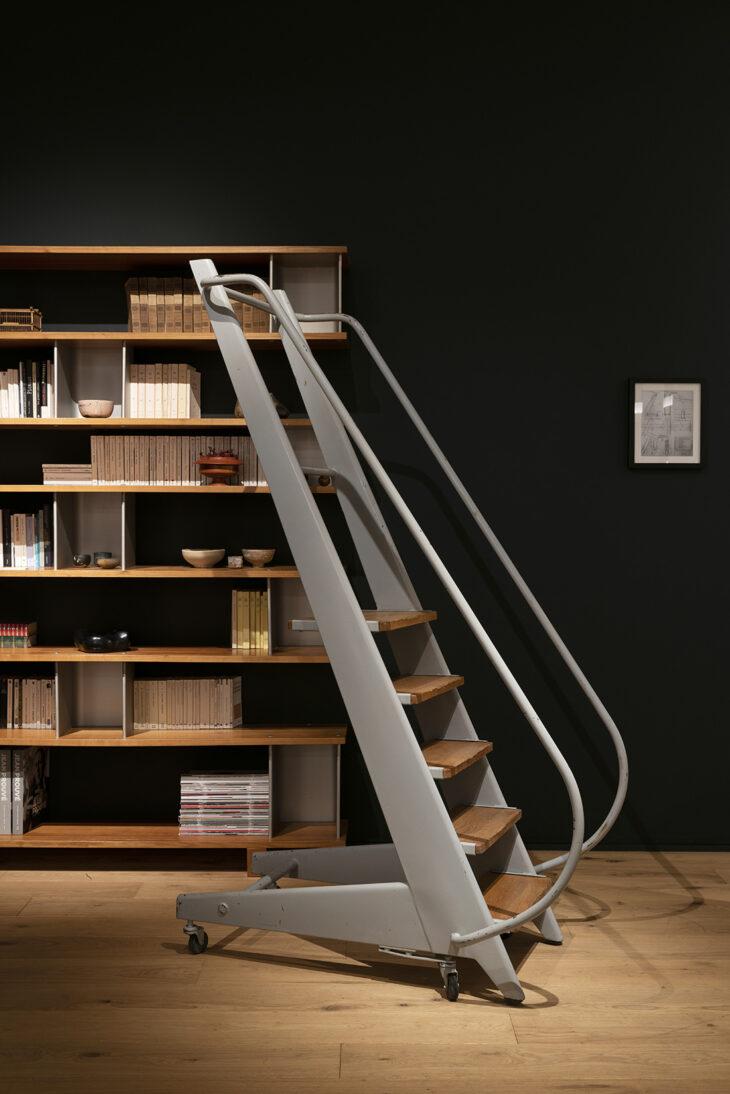
Rare works designed by PIERRE JEANNERET, CHARLOTTE PERRIAND, and JEAN PROUVÉ, three of the most influential architects and designers of the 20th century, will be on display at GALERIE PATRICK SEGUIN’s booth at TEFAF New York 2023 art fair.
An exhibition of classic furniture, lighting, and architectural works by JEAN PROUVÉ, a “constructor” of visionary talent and unabashedly modern, is featured prominently in the booth. These pieces, some of which are extremely rare and come from selected provenances, are featured in the exhibition.
JEAN PROUVÉ AT TEFAF
For instance, the exhibit contains a very rare rolling step-ladder that was made for the BNP Paribas bank vaults in Paris – among which an example is held in the collection of the Centre Pompidou; a remarkable lighting ramp that was made for the Social Security offices in Le Mans and produced in only 12 copies; a façade panel with portholes of contrasting coloured surfaces from one of the two ‘Maisons Tropicales‘ in Brazzaville (Congo), iconic examples of architectural design.
The setting is completed by a sofa, two fireside chairs, and towering bookshelves designed by CHARLOTTE PERRIAND. The sofa and chairs were designed by PIERRE JEANNERET for the High Court and the University of Punjab in Chandigarh (India), while the bookshelves were a one-off item commissioned to Editions Steph Simon in 1959.
Demountable Wood Chair by Jean Prouvé
In addition, Gagosian is placing design in the spotlight by hosting a unique presentation in the retail shop of the gallery located on Madison Avenue.
Gagosian has formed a partnership with the well-known Galerie Patrick Seguin in Paris to exhibit (and make available for purchase) a design classic titled “Demountable Wooden Chair CB22 from 1947” designed by Jean Prouvé. The gallery will display two chairs: one will be fully completed, while the other will have been disassembled and hung back together again as if it were a work of art. However, only the fully assembled chair will be available for purchase. In addition to historic posters, the exhibition will contain a significant range of rare books on Prouvé, as well as a number of more current publications on the architect and designer.
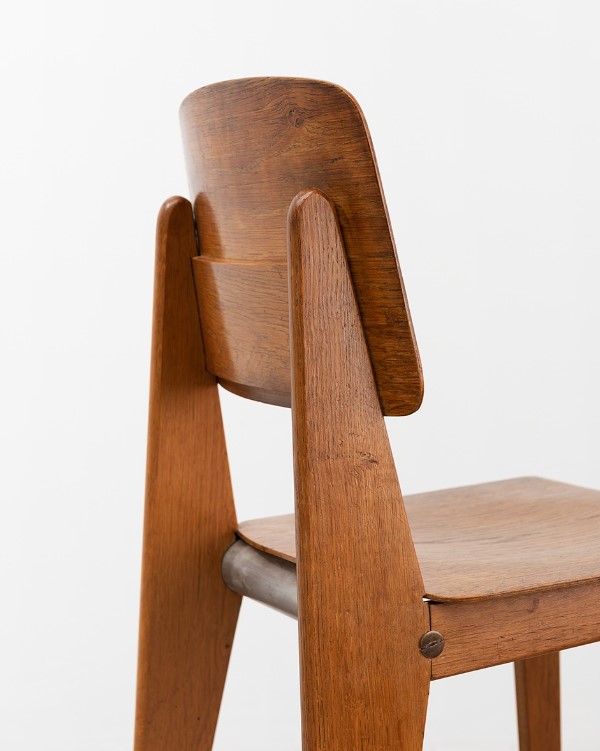
The significance of this chair lies in the fact that it exemplifies Prouvé’s capacity for adaptation and innovation by making use of wood as a material during a period after World War II in which raw materials like as steel were in short supply. Because it was the initial model of a “do-it-yourself chair” and because only a tiny number were created between 1947 and 1953, when the Ateliers Jean Prouvé were shut down, it is also extremely uncommon. The edition that will be displayed at Gagosian, which comes with an aluminium tube, is one of an incredibly restricted number of copies and is quite unusual.
The Galerie Patrick Seguin relationship with Gagosian is one of a new series of collaborations that were recently initiated by the gallery to showcase the work of a variety of artists, premium brands, and designers in our retail facilities located in New York and London. Artists, such as Marc Newson, have presented their work at a special presentation at the gallery’s Burlington Arcade site, while fashion designers, such as Alaia, have displayed garments at the gallery’s Madison Avenue and London shops that were inspired by Picasso’s Tanagra ceramics. In addition, Gagosian also collaborated with the Parisian jewelry business Repossi to present a collection of jewelry that was inspired by Robert Mapplethorpe’s early photography as well as the jewelry that he wore at the time.
THE STORY OF JEAN PROUVÉ
In 1901, the French architect and designer Jean Prouvé was born. His education in metal was received at the Enghien und Szabo studio, where he was mentored by Emile Robert. In the year 1924, Jean Prouvé opened his own metal workshop in order to manufacture furniture and other household goods out of sheet steel. The designer and artisan was also a co-founder of the group known as the Union des Artistes Modernes, which was an organization with the mission of promoting modern production and materials.
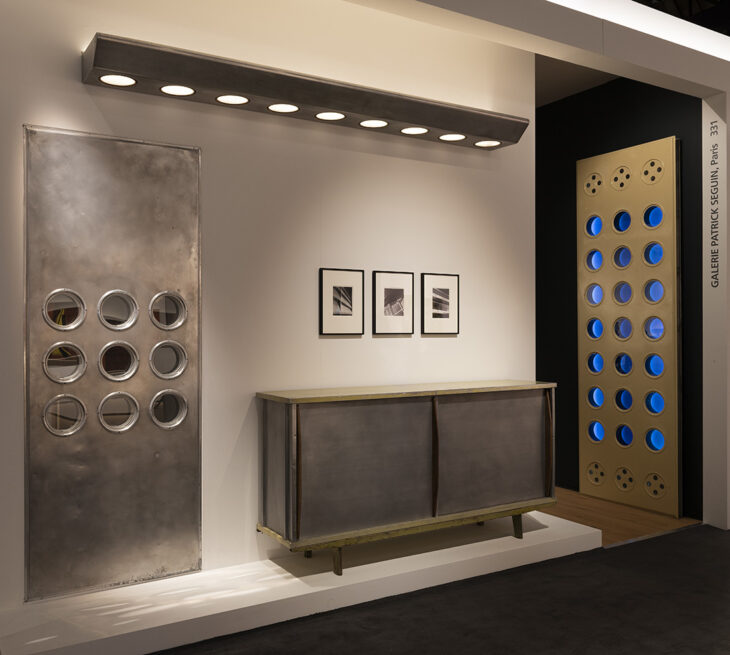
Due to the lack of availability of metal during the Second World War, Jean Prouvé focused the most of his work on wood. He continued to design and craft pieces of furniture and modest architectural forms, some of which were shelters for the destitute. Following the conclusion of the war, he established a factory in Maxéville with the purpose of producing prefabricated furniture and residences. In 1931, he established the prosperous “Ateliers Jean Prouve” and began working with the French architects Eugene Beaudoin and Marcel Lods on a variety of projects, including the construction of the Maison du Peuple in Clichy, an aviation club, and an army barracks. In addition, he worked on a number of different furniture designs in tandem with Charlotte Perriand and Pierre Jeanneret, who was a collaborator and cousin of Le Corbusier. The conflict enabled businesses known as “Ateliers” to continue producing items such as bicycles and a stove known as “Pyrobal” that could be used with any fuel. After the war, Prouve was given the position of mayor of Nancy in recognition of his political activity as a member of the Resistance during the war. In addition, Prouve was politically active during the war. After the war was over, he was given the position of Departmental Inspector for Technical Education, in addition to serving as a member of the Advisory Assembly. The “Ateliers Jean Prouve” were given a commission by the Ministry of Reconstruction to mass-produce frame dwellings for displaced people.
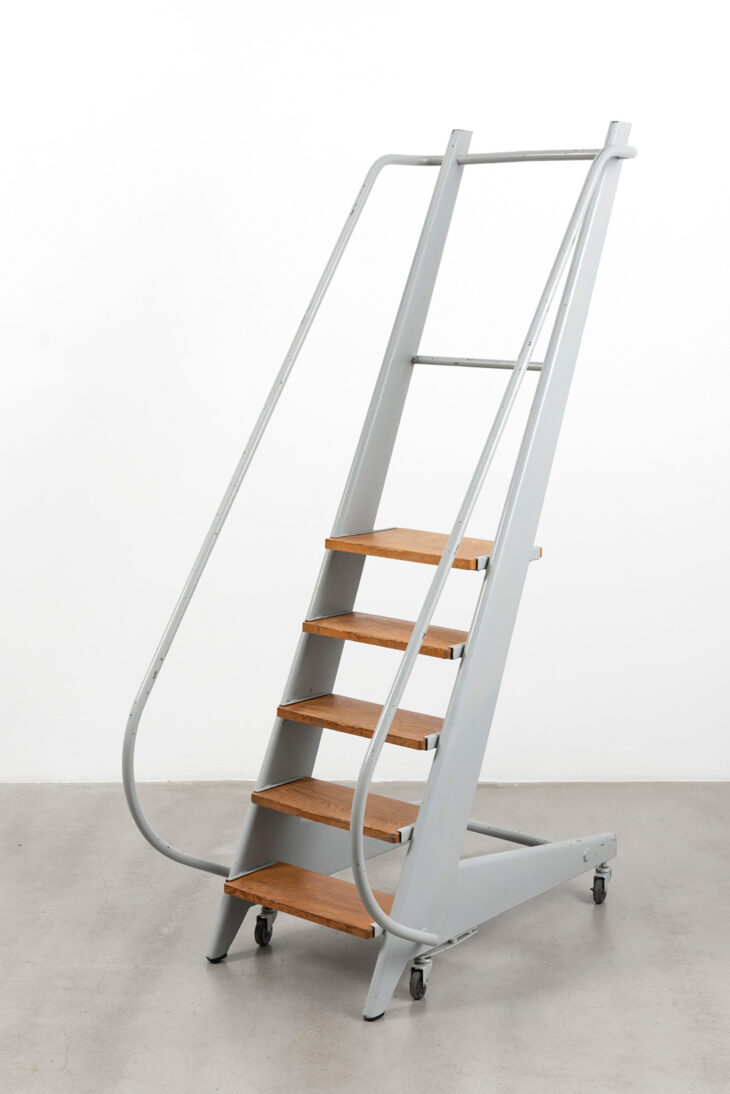
In 1957, he was appointed to the position of lecturer at the Conservatoire des Arts et Métiers as well as head of the architectural competition for the Centre Pompidou. Jean Prouvé was successful in achieving the goal of combining the demands of functional requirements, the ethical use of materials, and economical concerns with the complexities of mass production.
JEAN PROUVÉ, CHARLOTTE PERRIAND, PIERRE JEANNERET, LE CORBUSIER, and JEAN ROYRE are some of the most influential designers and artists of the 20th century, and the GALERIE PATRICK SEGUIN has been working tirelessly to promote their bodies of work ever since it first opened its doors. The gallery now represents and exhibits the work of these five designers and artists.
Discover more of the pieces in our gallery:
